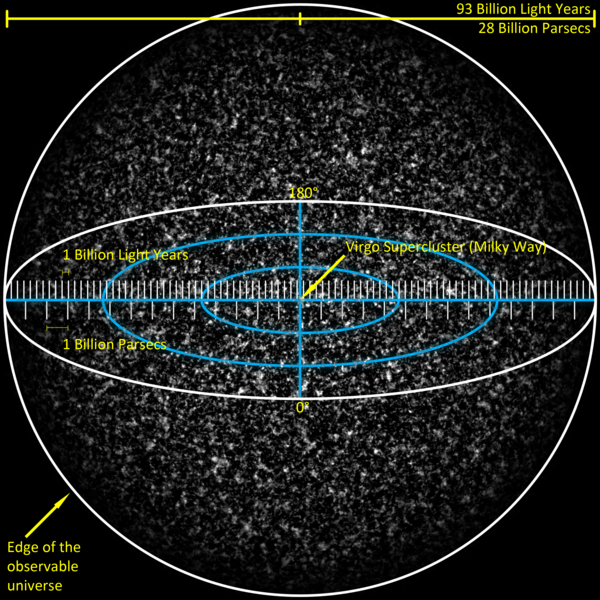The Biggest Mistake With Galaxy Mapping
When we peer into the cosmos at the celestial sphere, looking deep into space to see distant galaxies, we make a big mistake in mapping their position.
If we see a galaxy, we see it at a very specific position in the celestial sphere. We then determine the galaxy's distance away and then, voila, we then say that the galaxy that emitted the light was at that angle and that distance away when it emitted the light. You might be thinking, "well, duh; there's nothing wrong with that."
Here's the problem: this does not account for large-scale gravitational lensing effects in the cosmos.
Due to this assumption that the light travels in a straight line to reach Earth, without undergoing gravitational lensing, we physically position galaxies into the cosmic web known as the observable universe. This then leads to us thinking the map of galaxies in the cosmos looks like this:
However, as an object's mass increases, its gravitational lensing effects also become more and more dramatic. The light that arrives at Earth from distant galaxies has been gravitationally lensed by the Great Attractor. The more distant, the more inaccurate its apparent position is relative to its actual position. When we see a distant galaxy, the angle that it arrives at Earth is only the angle of travel that the light is at due to gravitational lensing at that exact moment. It was not always traveling at that angle, but it has had its pathing bent so that it just happens to arrive at the angle it arrives at when it reaches Earth. We then assume a straight trajectory which leads to a mapping as we see.
In reality, the Milky Way is one galaxy in a "galaxy of galaxies." Lets call it a supergalaxy. The central black hole--the Great Attractor--bends all visible light within the supergalaxy so that it travels in Figure-8 orbitals as part of its electromagnetic field. This is how gravity produces electromagnetism. Also, due to this Figure-8 orbital, this is how the gravitational force of the Great Attractor produces gravitational redshift per distance.
So when we map the position of a galaxy, because we assume the light traveled in a straight line, it leads to drastic misinterpretations of the large-scale structure of the universe.
This is extremely critical to understanding how the universe is as it is. Optical illusions as a result of gravity are deceiving and can lead us to false conclusions about reality. Simply put, The Big Bang did not happen. The universe is infinite. And this is recognizable when large-scale gravitational lensing effects are recognized and accounted for.
For more information, see my other posts, visit my website CascadingUniverse.Org
Or read my book, The Simple Reality.
